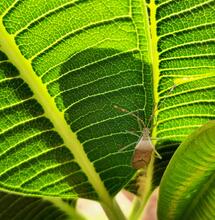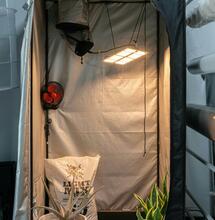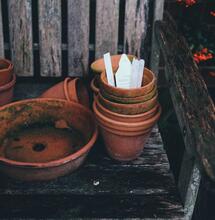Indoor - outdoor differences, i.e. what is (perhaps) in store for you

As all readers of Soft Secrets may probably know, cannabis, like all other plants, may be grown outdoors as well as indoors (with artificial light). The difference should be clear enough. Each of the two growing methods entails secondary differences that can only be better understood if they are both tested. Let us look at the pros and cons of both methods with a theoretical approach supported by empirical evidence.
Author: Mr José / info@mrjose.eu. Indoor growing implies at least three advantages, which have made it so popular. The first advantage is the opportunity to grow plants in any season and weather condition. Your indoor garden may ‘operate’ uninterruptedly and you can harvest it as many as six times a year. The second advantage is that it can be set up everywhere, you do not need a terrace or garden. The third – no less important – advantage is discretion (this was crucial during the period of cannabis prohibition). A grow box placed at the right spot will suffice as long as it is far from prying eyes. Outdoor crops are more exposed to weather or the risk of being discovered, but they are less costly and problematic. Sunlight is free, rain can water plants for you and plants will e.g. resist many days and even weeks if you plan to go on holiday. [caption id="attachment_7206" align="alignnone" width="200"] The ‘monitored’ growing method (sea-of-Green) can only be tested indoors.[/caption]
Growing costs
As mentioned in previous articles, outdoor growing costs less than indoor growing. And the difference between the two could be very significant. A grow box requires the use of an artificial lighting system and air extractors as a minimum. If you opt for automatic irrigation you should add the cost of water pumps and a distribution-system pipe. A hydroponic system also requires other accessories, such as pH and EC testers, an airtight heating element and, if necessary, a hydroponic kit with all implements needed to plant and irrigate plants. All components need to be set up in a suitable room – if you do not have this, you may opt for the installation of one of the grow boxes currently available on the market. Setup costs for a 1 m2 grow area start from 250 €. At this minimum price you need to have a box with sufficient capacity available and, if you opt for growing in an earth substrate with manual irrigation, you should move away from your crop for more than three days. If you want to set up a complete grow room measuring 1m2, inclusive of a grow box and an automatic watering system, you need to assume a total cost of 600 €. Finally, if you use upmarket products, a first-rate 1 m2 grow room would cost around 1 000 €. That is not the end of it. A grow room absorbs power uninterruptedly. With a 400W fluorescent lamp and two fans, each harvest will cost 100 €. The cost of fertilisers is higher for indoor growing, but this largely depends on the adopted system – that is why it is not included in this estimate. All things considered, therefore, outdoor crops are simpler. You only need to choose a small plot and a few pots with good quality earth and start – as simple as that!
Differences between the two growing methods
Hail, rain, draught, animals? These incidents will not occur indoors – this is also one of the reasons why indoor crops produce high quality harvests. A grow box creates the ideal conditions for plant flowering and growth, while outside everything depends on what mother nature decides, and it tends to be whimsical sometimes. But nothing is for free – what is more, in a grow room you need to check that plants are far enough from the light source, that electronics operate smoothly, and much more. We will now dwell a bit on lighting because the difference between artificial and solar light forces growers to take special steps. In cultivation under artificial light, each centimetre of distance between plants and light counts. The intensity of light generated by an artificial source falls heavily as distance grows – so indoor growers need to make the most of it. Grow rooms are fitted with reflective films and growers are always seeking reflectors with the best performance, and combine them with different methods of monitoring growth, which are exclusively meant for indoor growing. Conversely, plants exposed to sunlight in an outdoor crop receive light from all angles and at all levels, and for flowers to grow optimally, branches are tied together in the lower parts – and, occasionally, these lower parts are folded to achieve maximum inter-plant distance. While plants growing at the same height make no difference in outdoor growing, this is a basic requirement indoors. For this reason, the sea-of-green method is not applied outdoors, while in an indoor setting it may considerably increase yield at each harvest. Obviously, each of the above techniques requires time. In a grow room, the height of plants plays a key role for plants to be uniformly lit. In conclusion, plants grown outdoors require less work. Pests and diseases are another difference worth mentioning. These problems invariably affect both growing methods, although indoor growing is less problematic. In a completely closed grow room, risks are lower than outdoors (with the free circulation of parasites and bacteria). Our indoor grow box can be cleaned and freed from pathogens before growing can start, which is totally impossible outdoors and may partially be obviated in a greenhouse. In any case, the outside disease hazard rate is higher than indoors. What is more, parasite removal is easier in a grow room than outdoors, as the space is much smaller. The early identification of parasites is also easier in a grow room. By contrast, in the open, plants can be attacked by night pests that cannot be easily seen, making the selection of an appropriate treatment much more difficult. That is why the use of pesticides or other forms of protection is recommended. [caption id="attachment_7207" align="alignnone" width="300"] This may only happen in an outdoor crop. Source: Paradise Seeds – Opium[/caption]
Climate and fertilisation
The worst disadvantage of outdoor growing is the unpredictability of weather conditions. For a final cannabis product to have the expected qualities (a rich and good-quality harvest), abundant water and sun are needed. Not all regions have ideal sun-rain ratios. If we could choose the ideal climate conditions – we would like to have warm sun from May to mid-October. With manual irrigation, we could have a perfect harvest. In amateur growing, lack of water can be quite easily remedied, while without sun you are definitely in trouble. When summer is cold and there is little sun, no compact buds will grow and plants will occasionally fail to mature. Too much rain in late summer could cause mould in buds. In any case, the problem of mould is also quite frequent in indoor growing, the only difference being a better opportunity to combat it. Fertilisation is easier and less costly for plants grown outdoors, especially if a comparison is made between outdoor growing in fertile compost and indoor hydroponic growing. If you also have the opportunity to use organic fertilisers, such are manure, fowl droppings and other similar types, this will do. The cost of indoor fertilisation is lower with compost growing but, in any case, it will exceed that of outdoor growing. [caption id="attachment_7208" align="alignnone" width="300"] Autoflowering cannabis varieties sown in June will bloom as early as in the first days of July – ripening is very quick.[/caption]
Taste and harvested quantities (yield)
Even when you put all of your efforts into it, outdoor yields will not be as plentiful as those obtained with artificial light. Plants grown under lamps are stouter and more tasteful and smell intensely – whether for recreational or therapeutic use, you only need a small dose. I cannot give precise figures or lab results, but the difference in yields can be confirmed by anyone with an experience in both growing methods. Is better efficiency an advantage or a disadvantage? In the period when I used marijuana to alleviate the adverse effects of chemotherapy, I always preferred cannabis grown indoors, whose sweet effect befitted my requirements. Obviously, the experience is subjective and each individual knows what effects cannabis can have on him or her. A large group of people, however, prefer outdoor products for their specific aftertaste and milder effects. Another difference between the two methods is the quantity yielded by each plant. With outdoor growing, yield will be more than one kilogramme of (dried) flowers per plant. But not everyone can obtain such a quantity and most growers may reasonably expect a few hundred grammes. As the yield of plants is usually 15-50 g per plant, the difference is remarkable. It is also worth recalling that plants are only harvested once a year, while indoors there could be several harvests during a year.
Conclusions
Growers usually have their own favourite indoor or outdoor growing methods. In my experience, I found more people shifting their crops from outdoors to indoors, than the reverse. There were many reasons behind this choice, the most significant of which were discussed in this article. Personally, I find the opportunity to create optimum growing conditions indoors more crucial, with a very good chance to produce a premium quality end product, and the opportunity to test and discover new growing alternatives. On the other hand, growers who shifted their crops from the inside to the outside, were motivated by the need to check whether a highly qualitative harvest can also be obtained outside. In my view, the worst disadvantage of outdoor growing is the risk that, after working several months on a crop, the final result can be frustrated by bad weather. Of course you also need to have suitable spaces to grow plants outside. Your frustration will be even stronger if you think that your next chance will only be after several months



.png)